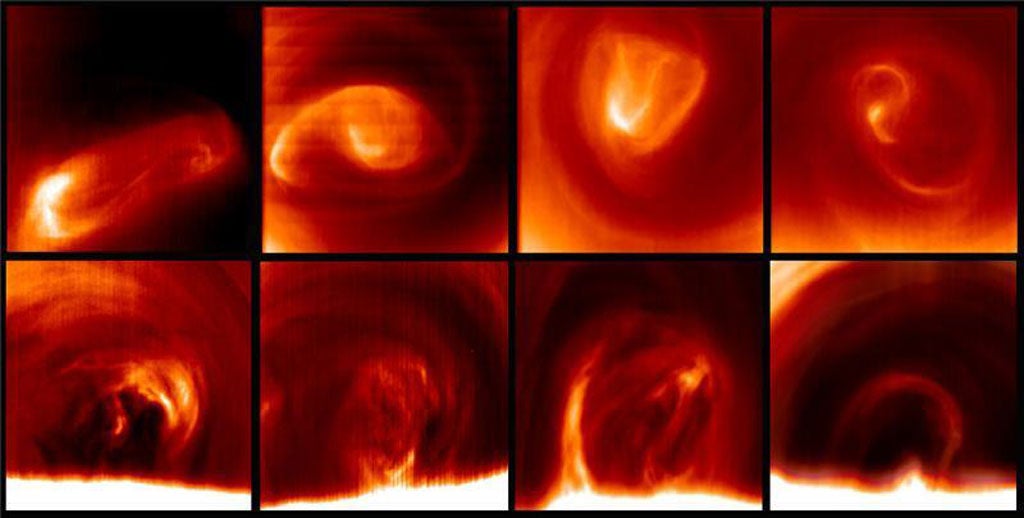The study used infrared images from the VIRTIS instrument onboard the European Space Agency’s Venus Express spacecraft. VIRTIS provides spectral images at different levels of the atmosphere and allows the observation of the lower and upper clouds of Venus.
Atmospheric vortices are common in the atmospheres of different planets of the solar system, although they have different behaviors. Venus is a planet similar to Earth in size, but very different in other aspects. It rotates slowly around its axis, with a day on Venus lasting 243 Earthdays, and it spins in the opposite direction to Earth. Its dense carbon dioxide atmosphere, with surface pressures of 90 times that of Earth, causes a runaway greenhouse effect that raises the surface temperatures up to 840° Fahrenheit (450° Celsius). Between 30–40 miles (45–70km) above the surface, there is a dense layer of sulfuric acid clouds that completely covers the planet and moves at speeds of 220 mph (360 km/h) in a phenomenon named superrotation, where the atmosphere rotates much faster than the surface of the planet. The origin of this effect is still unknown.
At the poles of Venus, the atmospheric circulation forms intense and permanent vortices that change shape and size on a daily basis. In the new analysis, researchers report that the winds in the vortex, which were tracked by studying images obtained by the Venus Express orbiter, change chaotically from day to day. This unpredictable nature of the Venus polar vortices make them different from polar vortices found on other planets, like Earth or Saturn, which are much more stable and predictable.
The large-scale cyclone extends vertically in Venus’ atmosphere over more than 12 miles (20km) through a region of highly turbulent permanent clouds. However, the centers of rotation at two different altitude levels (26 and 39 miles [42 and 62 km] above the surface) are not aligned, and both wander around the south pole of the planet with no established pattern at velocities of up to 34 mph (55 km/h). The study also finds that, even when averaged, crosswinds are roughly the same at both altitudes. There is still a strong vertical gradient with winds increasing by as much as 2 mph (3 km/h) for every mile of height and leading to possible atmospheric instabilities
The vortices are fed by the atmospheric superrotation and are trapped in polar regions by a wide, shallow collar of cold air in sub-polar latitudes. The eye at the center of the vortex covers an average area of 1,370 miles by 870 miles (2,200km by 1,400km). Despite several years of observations, it is not possible to explain why the vortex is variable enough to alter its shape in just one day or remain stable for weeks. Thus, along with the origin of the superrotation of the atmosphere, identification of a mysterious source of ultraviolet absorption in the clouds, Venus polar vortices are one of the great mysteries of our twin planet. This study will help for a more precise explanation of the vortex and its relationship with the atmospheric superrotation.










